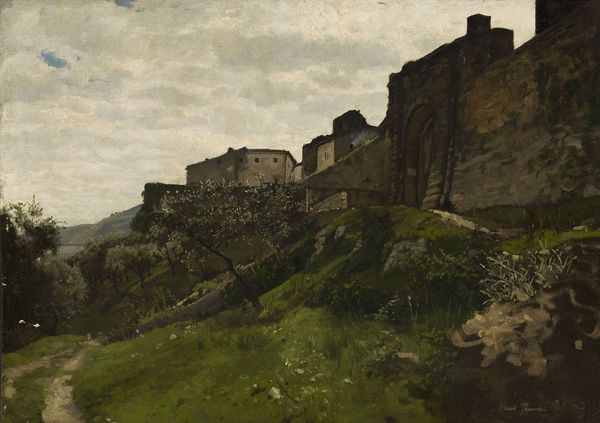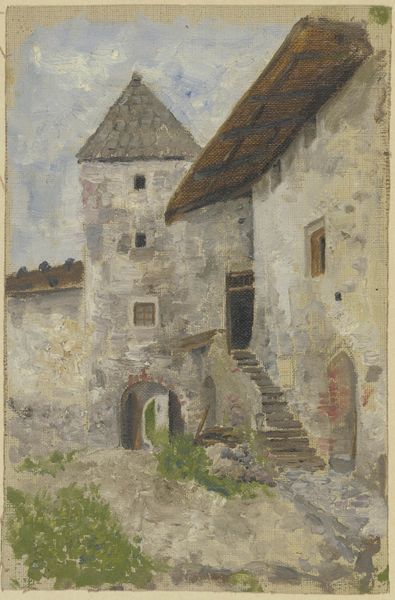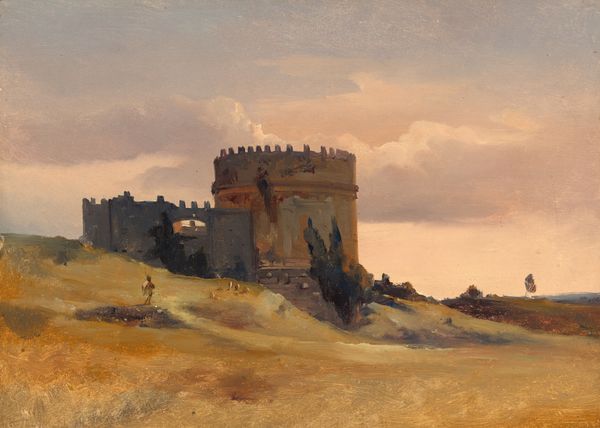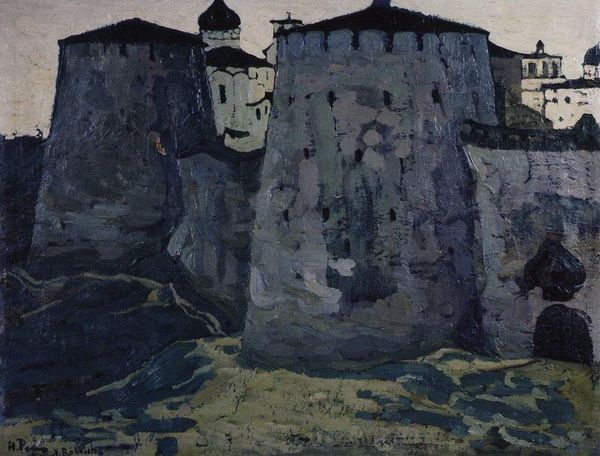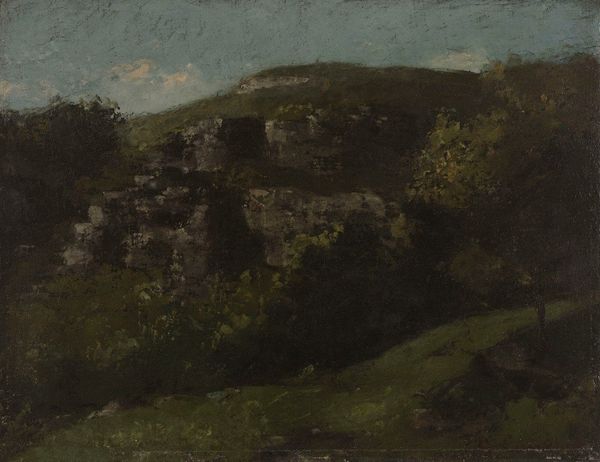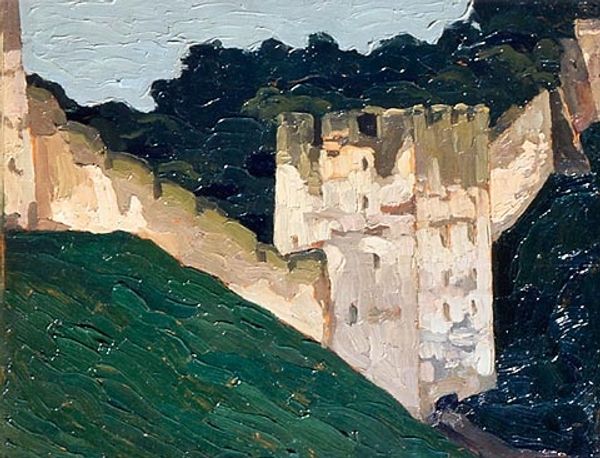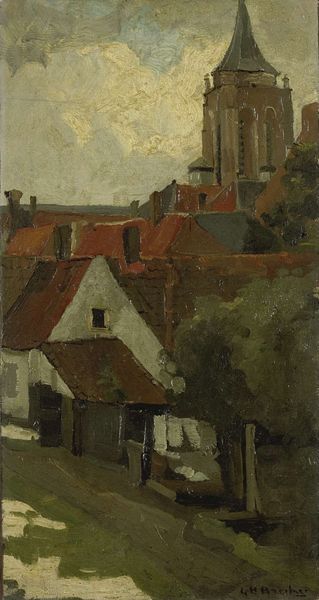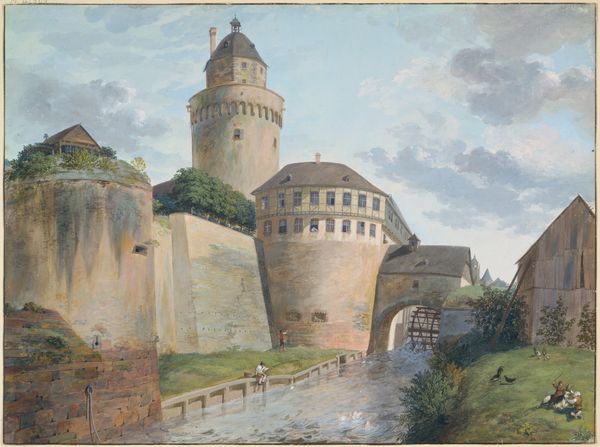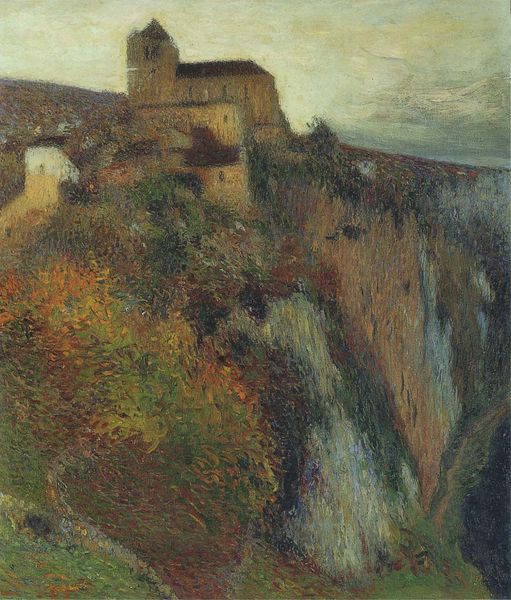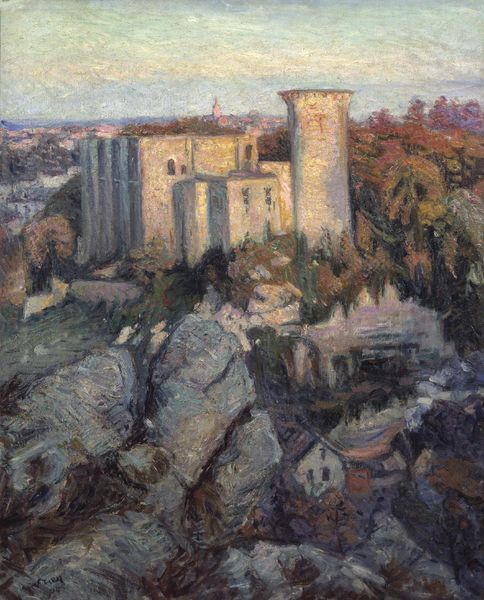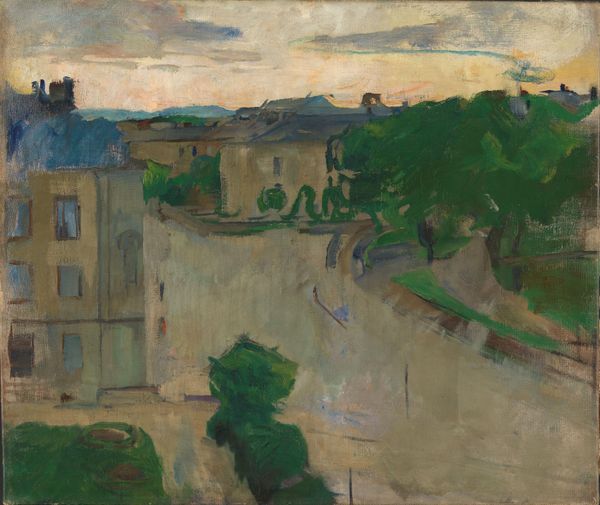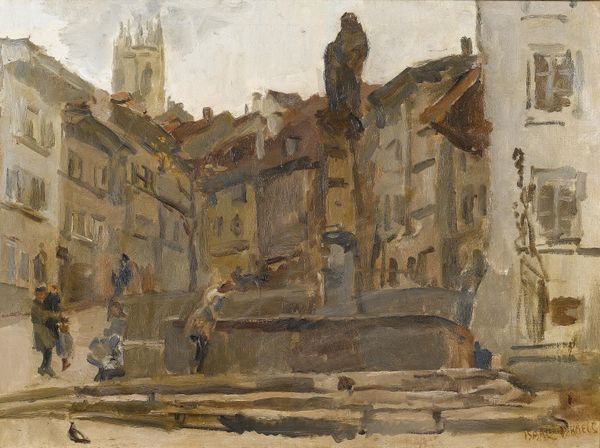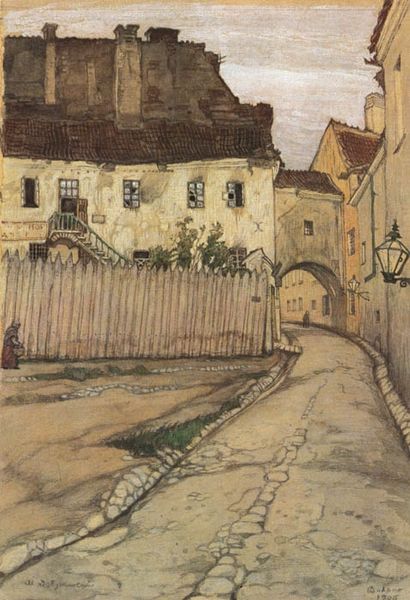
painting, oil-paint
#
medieval
#
painting
#
oil-paint
#
landscape
#
oil painting
#
russian-avant-garde
#
cityscape
Dimensions: 26.5 x 23.5 cm
Copyright: Public domain
Editor: Here we have Nicholas Roerich’s oil painting, "Tower of Novgorod Kremlin," from 1903. It’s quite a somber scene, wouldn’t you say? The painting almost feels like a memory. How do you interpret this work? Curator: Absolutely. It resonates with a sense of the past. Look at how Roerich uses the tower itself. For centuries, towers have represented strength, protection, and connection to something greater. What feelings does the imagery evoke? Editor: For me, I feel grounded because it is clearly connected with Earth, with those visible grassy areas leading up to it. A somber and secure feeling, perhaps? Curator: Consider the Russian cultural context as well. Fortified towers aren't merely defensive structures; they also symbolize historical continuity, the enduring spirit of the people, their will to stand their ground. Does it resonate with the visual language? Editor: I think so! With its large cylindrical shapes and rough texture, the tower feels like it embodies power through solidity, yet I’m curious why the color palette is not lighter to reflect optimism in that cultural context? Curator: It could be connected to an atmosphere that communicates the constant pressures this kind of setting sustained. How does the darker tone, then, change the narrative around strength? Editor: That’s true… if everything were vibrant and colourful, perhaps the tower’s symbolism would fall flat! So, Roerich uses not only imagery but also color to enrich the cultural understanding of the region. Curator: Precisely. It reminds us how much visual symbols carry cultural memory through ages, sometimes unconsciously. Editor: I see what you mean; the weight of history embedded within a single brushstroke. That is insightful.
Comments
No comments
Be the first to comment and join the conversation on the ultimate creative platform.
